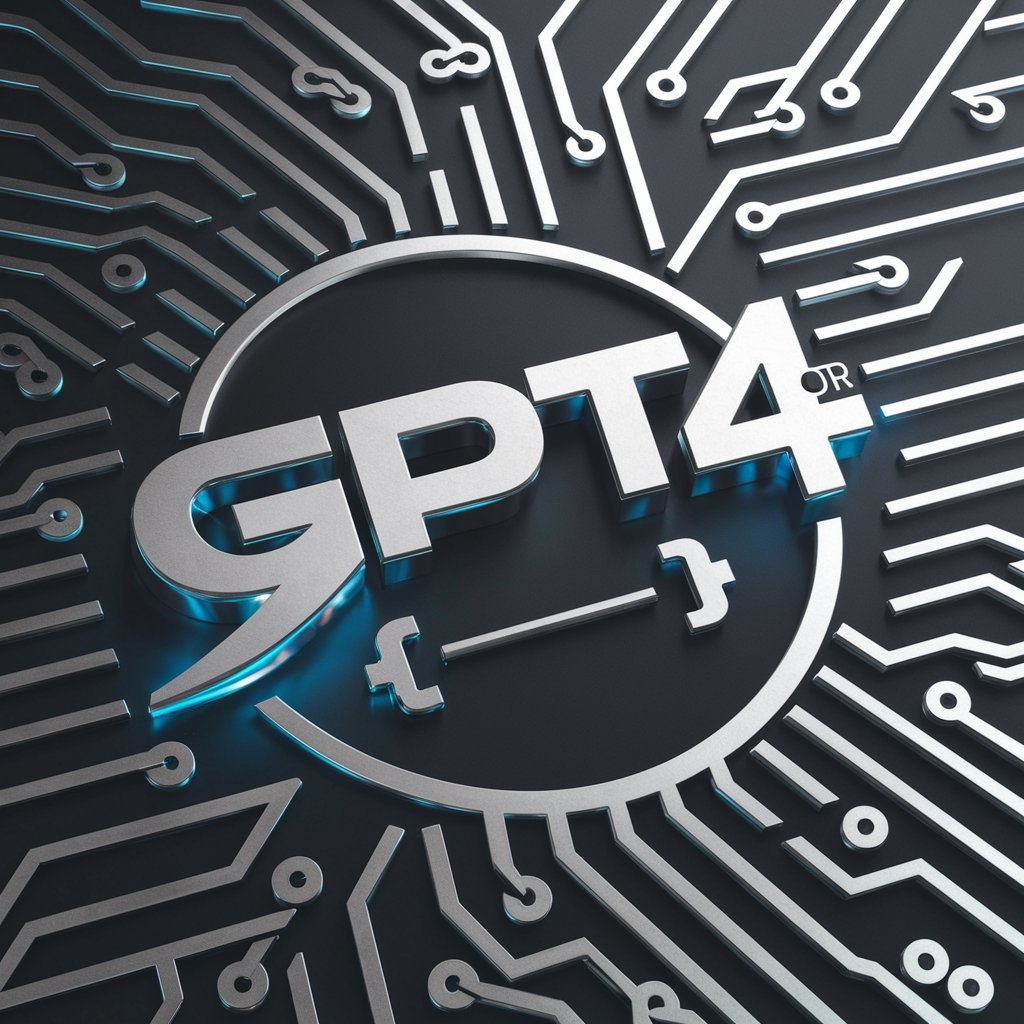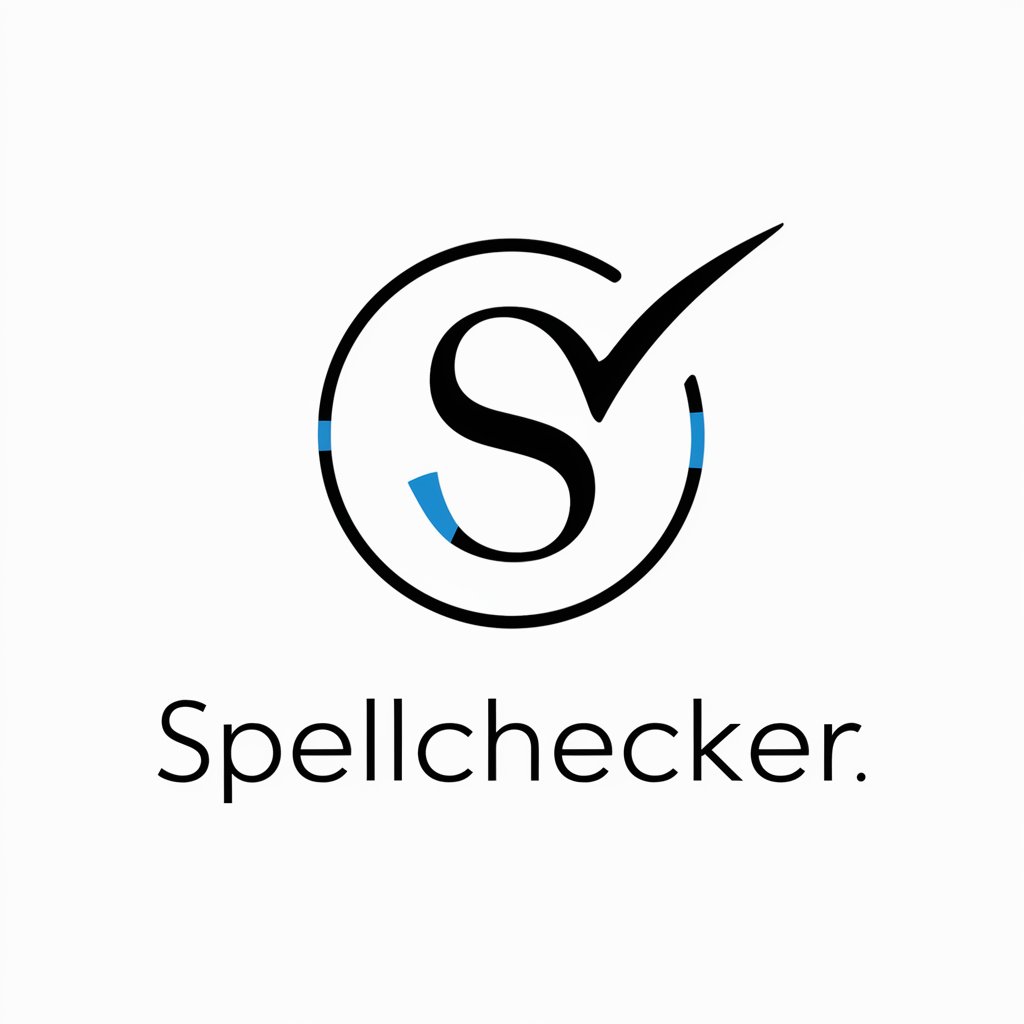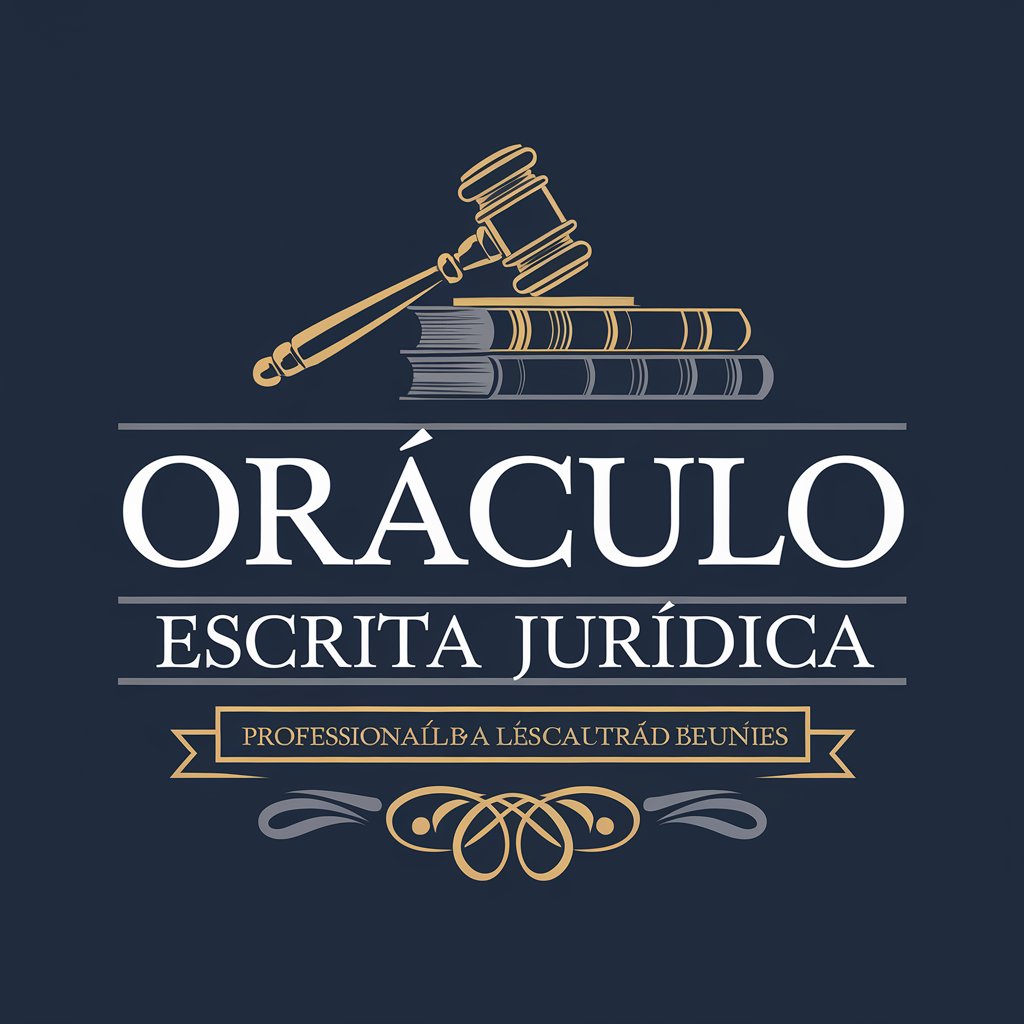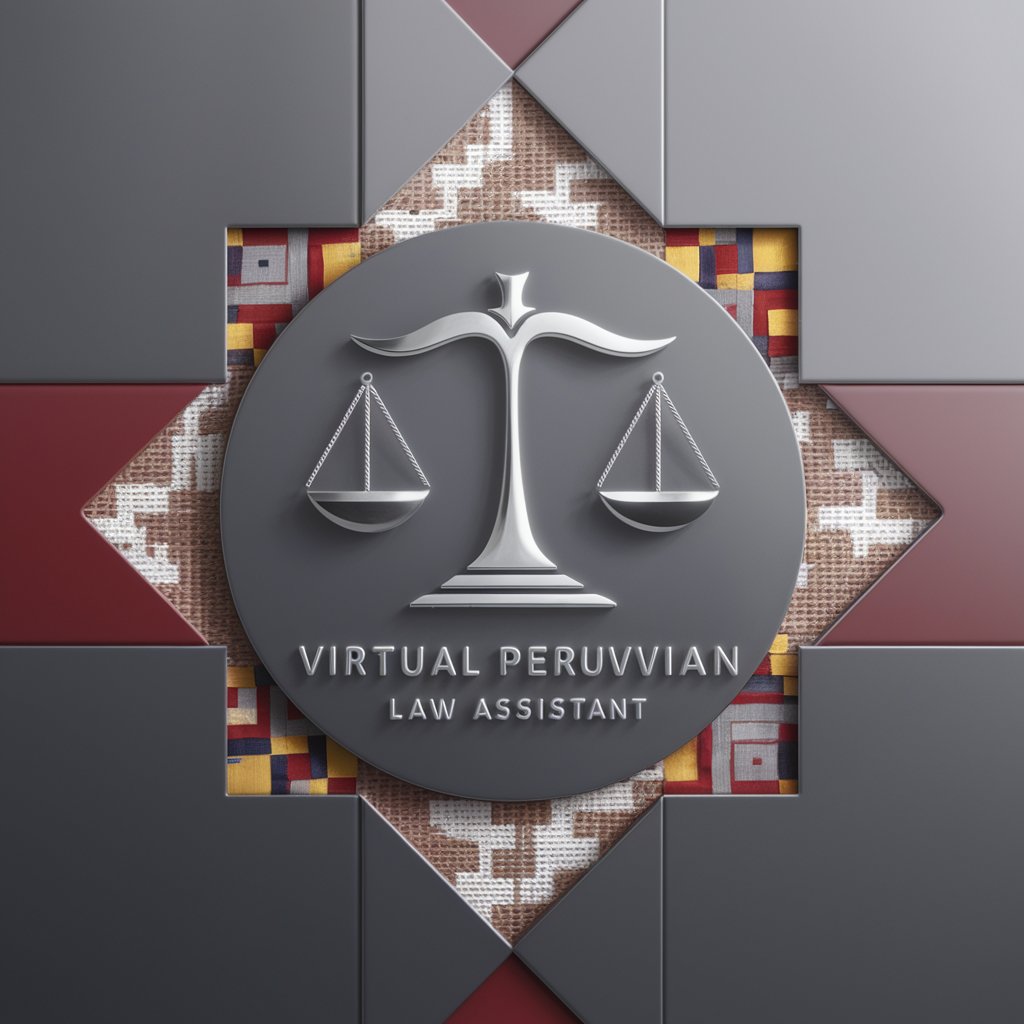
Derecho Civil Español-Spanish Civil Law AI
AI‑powered Spanish civil law drafting & research

Consultoría Legal especializada en derecho civil español, enfocado en resolver consultas y redactar documentos legales.
Get Embed Code
Introduction to Spanish Civil Law (Derecho Civil Español)
Spanish Civil Law (Derecho Civil Español) is the body of private law that regulates legal relationships among private persons and entities in Spain: persons and family status, property and real rights, obligations and contracts, tort (civil liability), succession (inheritance), andJSON code correction special private-law regimes. Its design purpose is to provide legal certainty for private autonomy (freedom to contract and arrange personal and patrimonial relations), predictable rules for allocation and protection of property and persons, and procedural routes to enforce private rights through the civil justice system (primarily the Civil Code together with procedural rules in the Ley de Enjuiciamiento Civil — LEC). At a practical level the system integrates substantive norms (e.g., Spanish Civil Code and regional civil laws), interpretative guidance from doctrine (legal scholarship), and binding precedents from courts (Supreme Court jurisprudence and, to the extent applicable, the Tribunal Constitucional for constitutional conflicts). It also interacts with procedural rules (LEC) for how rights are claimed, proven and enforced in courts. A few short, illustrative scenarios: • Contract enforcement: A small business that supplied goods but was not paid will use contract-law rules (formation, breach, remedies) to calculate damages and file a civil claim under obligations rules; the LEC governs how the claim is pleaded, which evidence is admitted and how judgment is executed. • Family law: A married couple seeking separation will look to rules on matrimonial property regimes, parental authority and support obligations; these rules determine division of assets, custody arrangements and maintenance payments. • Property boundary dispute: Two neighbouring owners dispute the fence line. Civil property rules define ownership and real rights; evidence (title deeds, cadastral plans, witness statements) is assembled and a court or extrajudicial procedure resolves rights and possible damages or relocation costs. Overall, Spanish Civil Law aims to reconcile private freedom and social order by giving parties instruments to regulate their affairs and by providing courts with standards and remedies to resolve disputes and correct harms.
Main Functions of Derecho Civil Español
Regulation of Personal Status and Family Relations
Example
Matrimonial property regimes, parental authority, adoption, guardianship and domestic partnership rights.
Scenario
A couple planning marriage chooses between community property and separation of property. The lawyer explains the default regime, drafts a prenup (capitulaciones matrimoniales) if they want a different regime, and registers it before a notary. If the couple later divorces, the civil rules determine asset division, spousal support and custody. Practical steps: (1) identify applicable regime (national or regional civil law), (2) inventory assets and liabilities, (3) apply rules for equalisation or liquidation, (4) draft and file necessary judicial or notarial documents; if contested, initiate civil proceedings under the LEC listing claims, legal grounds and proposed measures (custody, interim maintenance).
Governing Obligations and Contracts (Formation, Performance, Remedies)
Example
Drafting, interpreting and enforcing commercial or consumer contracts; claims for breach (specific performance or damages).
Scenario
A manufacturer fails to deliver a batch of parts on time, causing the buyer to lose a production contract. Lawyer’s tasks: (1) analyse the contract terms (delivery, penalty clauses, force majeure), (2) quantify damages (direct and foreseeable losses), (3) attempt extrajudicial resolution (formal notice, demand for payment/rectification), and if unsuccessful (4) file a civil claim seeking damages and, if appropriate, specific performance or contract termination. Procedural issues: prepare evidence (invoices, delivery notes, correspondence), calculate interest and costs, and follow LEC rules on pleadings, jurisdiction, and evidence. This function also covers consumer-protection overlaps and limits on unfair contract terms.
Property, Succession, Torts and Remedies (Rights in Rem and Liability)
Example
Title disputes, easements, boundary conflicts, drafting wills and intestacy rules, tort claims for personal or property damage (civil liability).
Scenario
After a negligent tree-trimming contractor causes damage to a neighbour’s car and garden, the neighbour pursues a tort claim for repair costs and consequential losses. Lawyer’s approach: (1) establish factual causation and fault, (2) collect evidence (photos, invoices, witness statements, expert arborist report), (3) calculate compensation (repair, depreciation, lost use, emotional disturbance if applicable), (4) negotiate a settlement or commence a civil action. For succession: when a person dies without a valid will, intestacy rules determine heirs and shares; if there is a will, ensure formal validity and resolve inheritance tax and partition, using judicial action for claims against the estate if necessary. For property rights, remedies include restitution, removal of nuisances, declaratory relief and execution of judgments (ejecución) to enforce monetary awards or evict squatters/unauthorised occupants.
Ideal Users of Derecho Civil Español Services
Private Individuals and Families
People who need advice or legal action about everyday private-law issues: purchase and sale of houses, tenancy and landlord disputes, marriage and divorce, child custody and maintenance, wills and inheritance, consumer claims (defective goods or services), personal injury and property damage claims. Why they benefit: civil-law advice secures their patrimonial interests, family stability, and personal rights, helps avoid expensive mistakes (e.g. poor contract terms), and provides clear procedural paths to protect rights (notarial acts, judicial claims, mediations). Example use: an individual seeking to draft a will, register a property title correctly, or claim compensation after a traffic accident.
Legal Professionals and Judicial Actors
Judges, lawyers (abogados), court agents (procuradores), notaries and legal academics who require specialised substantive and procedural analysis: drafting pleadings conforming to the LEC, advising on precedents, preparing expert evidence, or composing legal opinions. Why they benefit: access to structured civil-law analysis, model pleadings and argumentation grounded in Civil Code provisions, regional civil law peculiarities, doctrine and jurisprudence; helps deliver well-founded litigation strategies and juridical reasoning consistent with national case law and procedural rules. Example use: an abogado preparing a complex breach-of-contract claim with cross-border elements or a juez assessing how to apply patrimonial equalisation rules on divorce.
Businesses, Financial Institutions and Public Administrations
Companies (from SMEs to large corporates), banks, real-estate developers, and municipal bodies that need legal certainty in transactions, debt recovery, property development, commercial leases, guarantees, and corporate contracts. Why they benefit: civil-law services reduce commercial risk through precise contracts, compliance with property and succession regulations, effective enforcement of claims, structured risk allocation (warranties, indemnities) and faster dispute resolution strategies (negotiation, arbitration or litigation). Example use: a developer seeking to clear title issues, structure purchase agreements, handle contractor disputes and secure execution of judgements to recover losses or complete projects.
How to use Derecho Civil Español
Start at aichatonline.org for immediate access
Visit aichatonline.org to start a free trial—no login required and no ChatGPT Plus subscription needed.
Prepare your case materials
Collect and upload all relevant PDFs (contracts, pleadings, statutes, jurisprudence, guides such as the LEC and 'Guía de redacción judicial clara'), and prepare a concise factual chronology, names, dates, and jurisdictional notes so the tool can map facts to legal norms.
Specify the output and use case
Tell the tool exactly what you want: draft complaint, defense, contract clause, legal memo, citation list, or argument map. Indicate required formalities (LEC article citations, signature blocks, language—Spanish/English), preferred citation style, and the procedural stage.
Interact iteratively and ask for sources
Use iterative prompts: request draft → request revisions → ask for alternative lines of argument and a prioritized checklist of evidence. Ask explicitly for statutory and case citations, pinpointedDerecho Civil Español guide article numbers, and quoted excerpts from uploaded PDFs for traceability.
Verify, adapt and obtain legal review
Treat outputs as advanced drafting and research support. Verify citations against BOE/CENDOJ, adapt to local court rules, ensure signatures and procedural requirements, and have a qualified Spanish lawyer or procurador review before filing or using in high-stakes matters.
Try other advanced and practical GPTs
Flowchart | Diagrama de flujo | خريطة تدفق | 流程图
AI-powered flowcharting for streamlined processes.

Copywriter Assistant
AI-powered content creation, effortless and fast.

P5js Visual Coder
AI-powered p5.js sketch generator.

GPT 4 Turbo
AI-powered solutions for smarter work

SpellChecker
AI-driven spell and grammar correction.

Java Spring Boot
AI-Powered Spring Boot Development Assistant

Grammar GPT
AI-powered grammar enhancement at your fingertips.

ASIST - FORMULACIÓN Y EVALUACIÓN DE PROYECTOS
AI‑powered project formulation and evaluation

Suno音乐创作大师
Create music effortlessly with AI

Matlab
AI-powered MATLAB assistant for code generation, optimization, and deployment.

Chinese History 中国历史
AI-powered insights into Chinese history

Kubernetes
AI-powered Kubernetes orchestration made simple.

- Academic Writing
- Case Analysis
- Contract Drafting
- Jurisprudence Research
- Court Filings
Common questions about Derecho Civil Español
What is Derecho Civil Español and who is it for?
Derecho Civil Español is an AI assistant specialized in Spanish civil and procedural law. It helps lawyers, judges, academics, law students, paralegals and informed citizens to analyze facts, draft pleadings and contracts, perform jurisprudential research, and generate citation-backed legal memos tailored to Spanish law and procedure.
Can it produce LEC‑compliant court documents ready for filing?
It can draft documents formatted to LEC requirements (structure, formal tone, typical headings, and suggested article citations such as those governing demands and responses). However, AI cannot sign, verify original evidence, or substitute a licensed representative. All drafts should be reviewed and finalized by an authorized abogado or procurador to ensure compliance with procedural local rules and signature/filing formalities.
How does the assistant use uploaded PDFs and legal sources?
Uploaded PDFs are treated as priority source material: the assistant extracts facts, quoted language, and pinpointable citations (page/paragraph). After that, it cross‑references authoritative Spanish sources (statutes in BOE, jurisprudence via CENDOJ and Supreme Court repositories, and recognized doctrine) to produce grounded reasoning and footnoted citations when requested.
What are the main limitations and risks?
Limitations include the risk of factual misinterpretation, changes in law after the requested 'as‑of' date, jurisdictional nuances, and omissions of local practice. AI outputs are support tools—not legal advice. Confidentiality must be managed by the user (avoid sharing privileged documents unless appropriate), and high‑stakes decisions should always be validated by a licensed practitioner.
How should I ask for the best results?
Provide a concise factual timeline, upload relevant statutes/jurisprudence PDFs, specify the procedural posture, request exact article citations and page‑referenced quotes, ask for alternative arguments (primary and fallback), and request a final checklist for filing. Specify language, desired length, and whether you want formal court style or explanatory memo.






